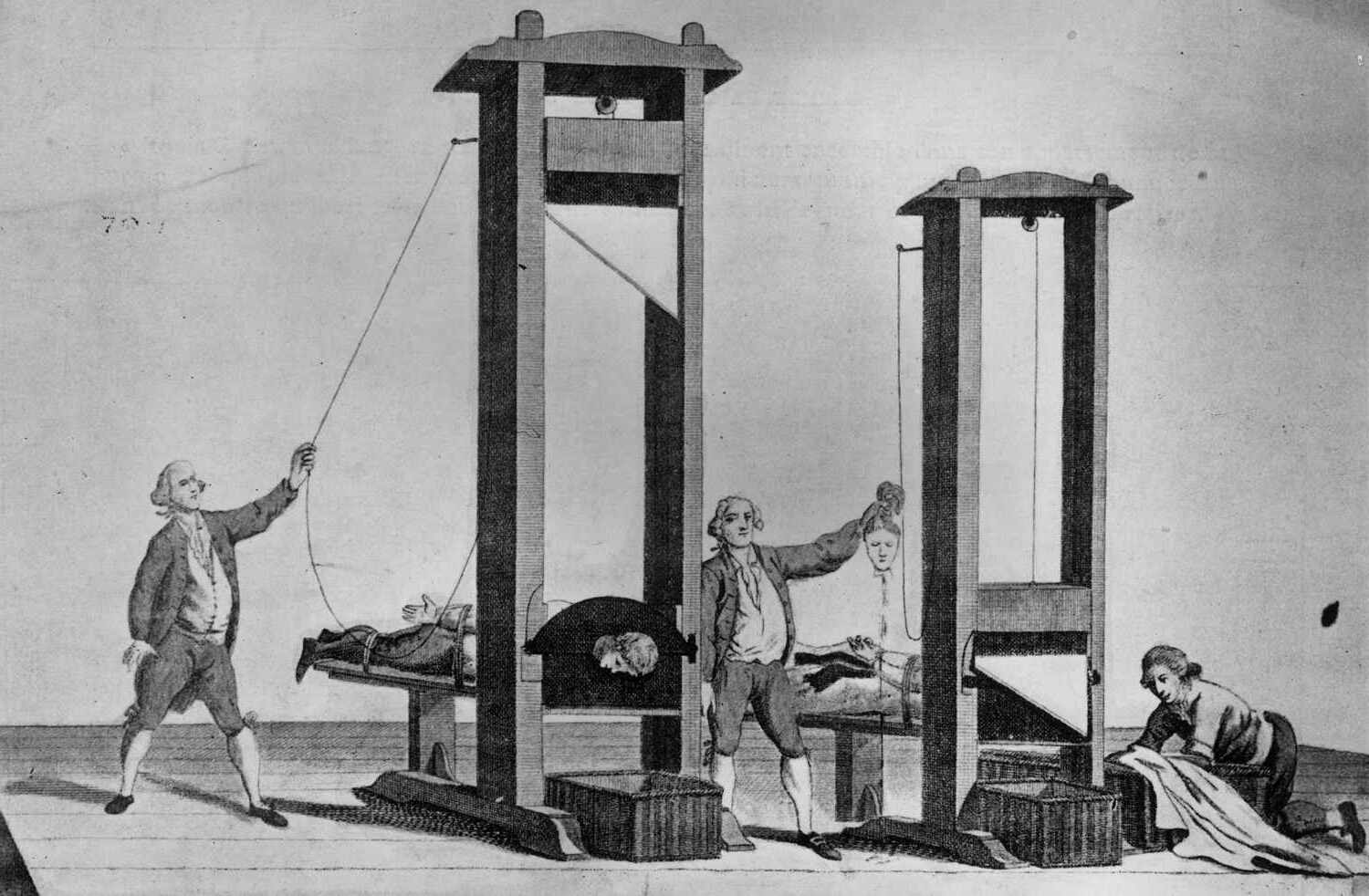
Guillotines hold a grim but fascinating spot in history, often associated with the French Revolution. Yet, there's much more to this execution device than meets the eye. From its surprising origins to its role beyond France's borders, guillotines have a complex story woven into the fabric of historical justice systems. In this introduction, we'll uncover 14 intriguing facts about guillotines that go beyond the common knowledge of their use for beheadings. These facts will shed light on the technological, cultural, and social aspects of guillotines, offering a comprehensive look at how this device influenced not just the method of capital punishment but also public perception and legal practices around the world.
Key Takeaways:
- The guillotine, named after Dr. Joseph-Ignace Guillotin, was designed for quick and humane executions during the French Revolution, symbolizing equality and leaving a lasting impact on history.
- With a 45-degree angled blade and a swift execution process, the guillotine became a prominent symbol of justice and tyranny, leaving a lasting legacy in media and popular culture.
The Origins of the Guillotine
The guillotine, a device synonymous with the French Revolution, has a fascinating history. Here are some intriguing facts about its origins.
-
The guillotine was named after Dr. Joseph-Ignace Guillotin, a French physician who proposed its use as a more humane method of execution.
-
Although Dr. Guillotin did not invent the device, his advocacy for a painless and quick execution method led to its association with his name.
-
The actual design of the guillotine was created by Dr. Antoine Louis, a French surgeon, and Tobias Schmidt, a German engineer.
-
The first prototype of the guillotine was tested on animals before being used on human subjects.
The Guillotine in the French Revolution
The French Revolution saw the guillotine become a symbol of the Reign of Terror. Here are some key facts about its role during this tumultuous period.
-
The guillotine was first used in 1792 to execute a highwayman named Nicolas Jacques Pelletier.
-
During the Reign of Terror, the guillotine was used extensively, with thousands of people, including King Louis XVI and Marie Antoinette, meeting their end under its blade.
-
The Place de la Révolution in Paris, now known as Place de la Concorde, was a prominent site for public executions by guillotine.
-
The guillotine was seen as a symbol of equality, as it was used to execute people from all social classes, from peasants to nobility.
The Mechanics of the Guillotine
Understanding how the guillotine works can shed light on why it was considered an efficient execution device. Here are some technical facts.
-
The guillotine's blade was angled at 45 degrees to ensure a clean and swift cut through the neck.
-
The device was designed to be quick and efficient, with the entire execution process taking only a few seconds.
-
The guillotine's height was typically around 14 feet, allowing the blade to gain enough momentum for a swift execution.
The Guillotine's Legacy
Even after the French Revolution, the guillotine continued to be used and left a lasting legacy. Here are some facts about its enduring impact.
-
The guillotine remained the official method of execution in France until the death penalty was abolished in 1981.
-
The last public execution by guillotine in France took place in 1939, drawing a large crowd of spectators.
-
The guillotine has appeared in various forms of media, from literature to films, often symbolizing justice or tyranny.
A Final Slice of History
Wrapping our journey through the chilling yet fascinating world of guillotines, we've uncovered truths and debunked myths. From its inception as a humane method of execution to its lasting impact on culture and society, the guillotine's legacy is as sharp as its blade. It's more than just a relic of the past; it's a mirror reflecting human society's evolution in justice and morality. As we move forward, let's carry with us the lessons learned from this slice of history. Understanding the guillotine's place in our shared past helps us appreciate the value of life and the importance of humane justice in today's world. Remember, history's not just about remembering dates and events; it's about understanding the why behind them, ensuring we don't repeat the mistakes of the past.
Frequently Asked Questions
Was this page helpful?
Our commitment to delivering trustworthy and engaging content is at the heart of what we do. Each fact on our site is contributed by real users like you, bringing a wealth of diverse insights and information. To ensure the highest standards of accuracy and reliability, our dedicated editors meticulously review each submission. This process guarantees that the facts we share are not only fascinating but also credible. Trust in our commitment to quality and authenticity as you explore and learn with us.
